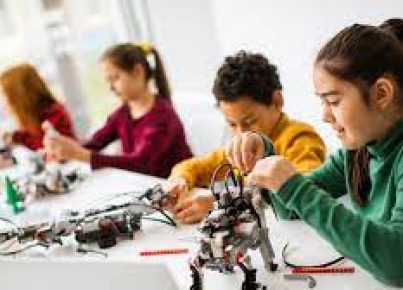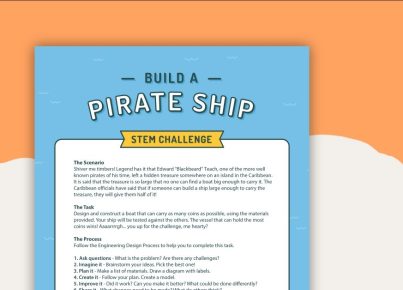Engaging middle school students in science lessons can be challenging at times, but these 20 simple machine activities are designed to capture their interests and enthusiasm. By incorporating hands-on experiments, collaborative projects, and real-life applications, these activities encourage a deep understanding of the six simple machines and their significance in our daily lives.
1. Inclined Plane Races: Students design miniature cars to race down an inclined plane, testing different materials and angles to optimize speed.
2. Wheel-and-Axle Lift: Pupils work in teams to create a device that uses a wheel and axle system to lift objects.
3. Levers – Balancing Act: Students experiment with various lengths of levers to see how changing the position of the fulcrum affects the effort required to lift a weight.
4. Pulley Power: Participants create pulley systems and observe how different setups can decrease the force needed to lift objects.
5. Screw – Corkscrew Competition: In this activity, students test different screws like corkscrews or jar-openers to identify which one makes it easier to open containers.
6. Design a Rube Goldberg Machine: Challenge your students with this interdisciplinary project where they must use all six simple machines to design a creative device that performs a simple task in an overly complicated manner.
7. Wedge Investigation: Students compare different types of wedges (like knives or doorstops) and analyze how varying their shape impacts their effectiveness.
8. Simple Machines Scavenger Hunt: Organize a scavenger hunt around your school, asking students to find examples of simple machines in everyday equipment and machinery.
9. Cross-Curricular Simple Machines Art: Have students design art pieces incorporating simple machines reflecting on what they’ve learned about mechanical advantage, efficiency, and proper usage.
10. Simple Machines Mural: Collaborate with the art teacher to have your middle schoolers come up with and create a wall mural showcasing each simple machine in action.
11. Build a Catapult: Get students immersed in medieval history by having them design, build, and test mini-catapults, highlighting the use of multiple simple machines.
12. Bike Exploration: In this activity, students dissect bicycles and analyze how different simple machines ease efficiency and minimize effort.
13. Compound Machine Challenge: Have middle school students devise and construct low-cost, multi-purpose compound machines that utilize more than one simple machine.
14. Construct a Crane: Challenge your students to create functioning cranes with materials such as popsicle sticks, string, and paper clips to lift various objects.
15. Musical Simple Machines: Instruct learners to create musical instruments with at least one simple machine involved in the process of making music.
16. Marble Run Madness: Students experiment with inclined planes and levers by building marble runs using recyclable materials such as tubes, cardboard, and tape.
17. Simple Machines Math Connection: Demonstrate how geometry concepts like angles, triangles, and applied force equations can help engineers optimize simple machines for efficiency.
18. Learning from Ancient Civilizations: Investigate historical applications of simple machines in ancient civilizations such as Egypt or Greece through readings or video documentaries.
19. Adaptation Challenge: Encourage middle school pupils to evolve their recently built machines to accommodate different scenarios or situations that challenge their designs’ limits.
20. Museum Exhibit Design: Task your students with creating museum exhibit portions for each type of simple machine, incorporating visuals, prototypes, and hands-on activities that would educate visitors about their utility in real-world applications.
By implementing these 20 engaging activities in your middle school science curriculum, you’ll be nurturing a deeper understanding of simple machines while sparking curiosity in young minds about the marvels of engineering and physics.





